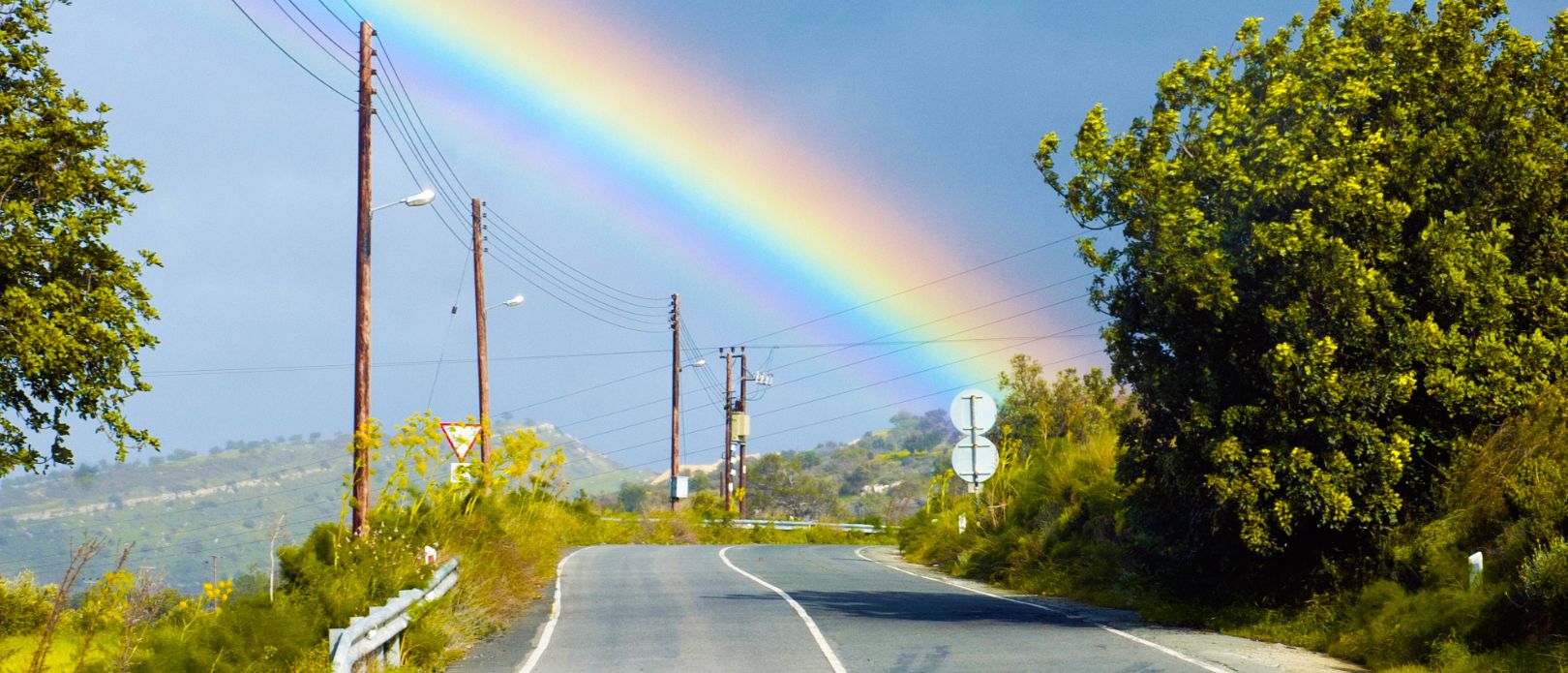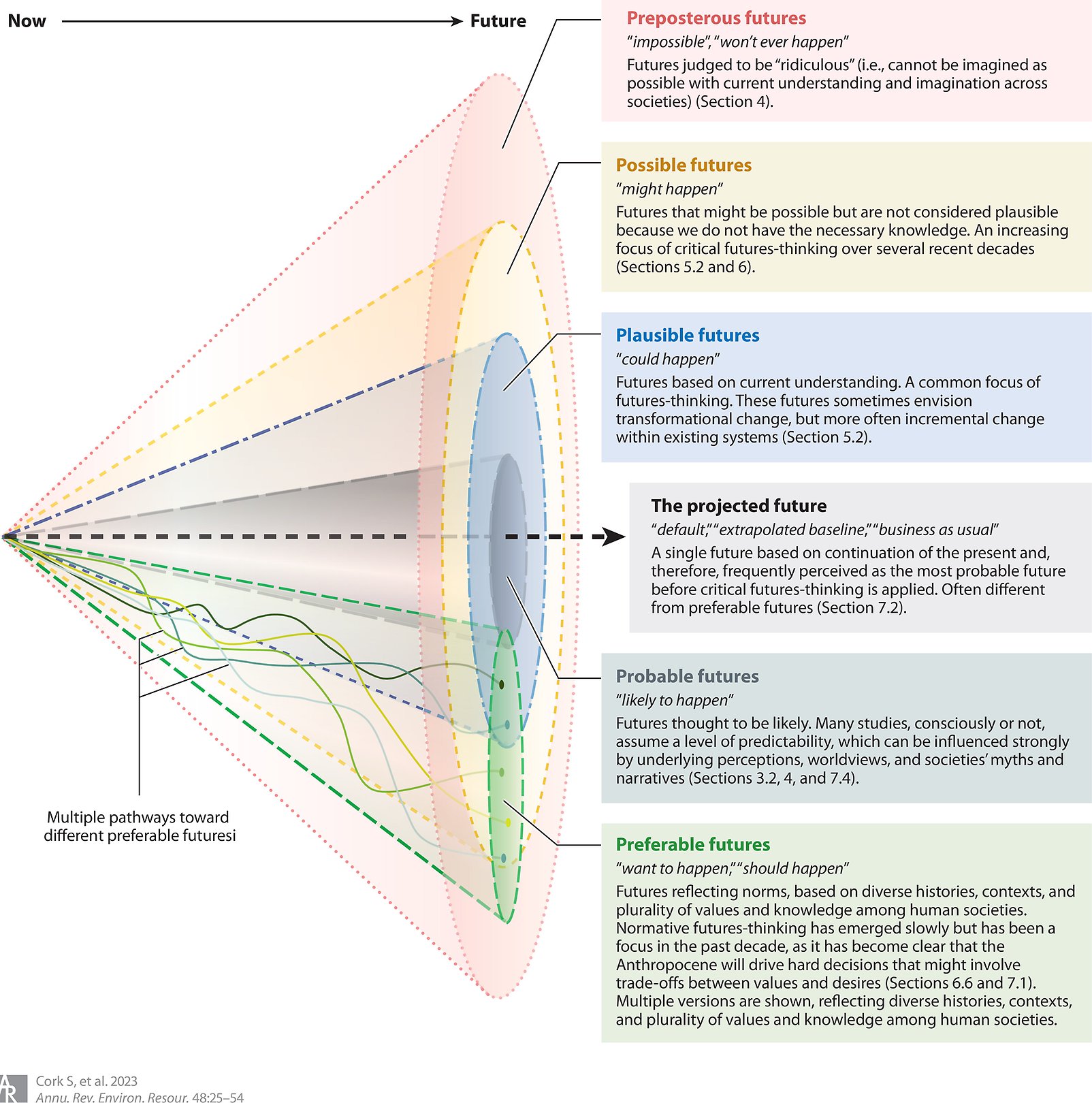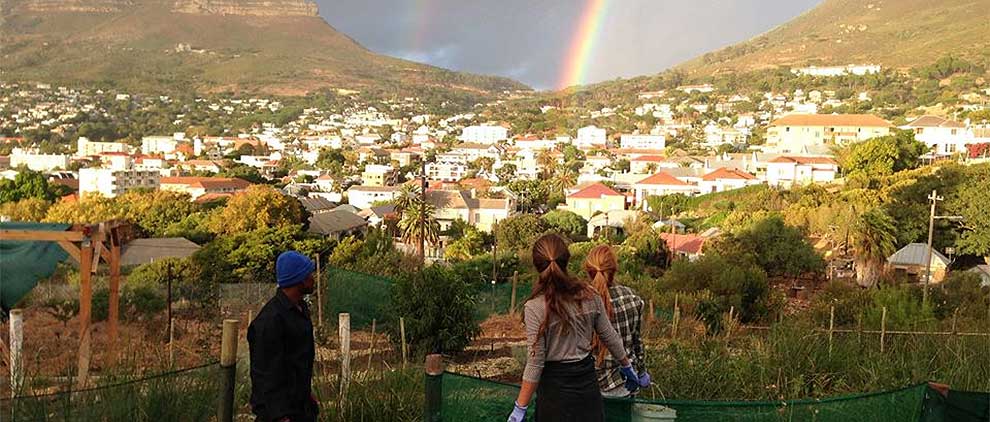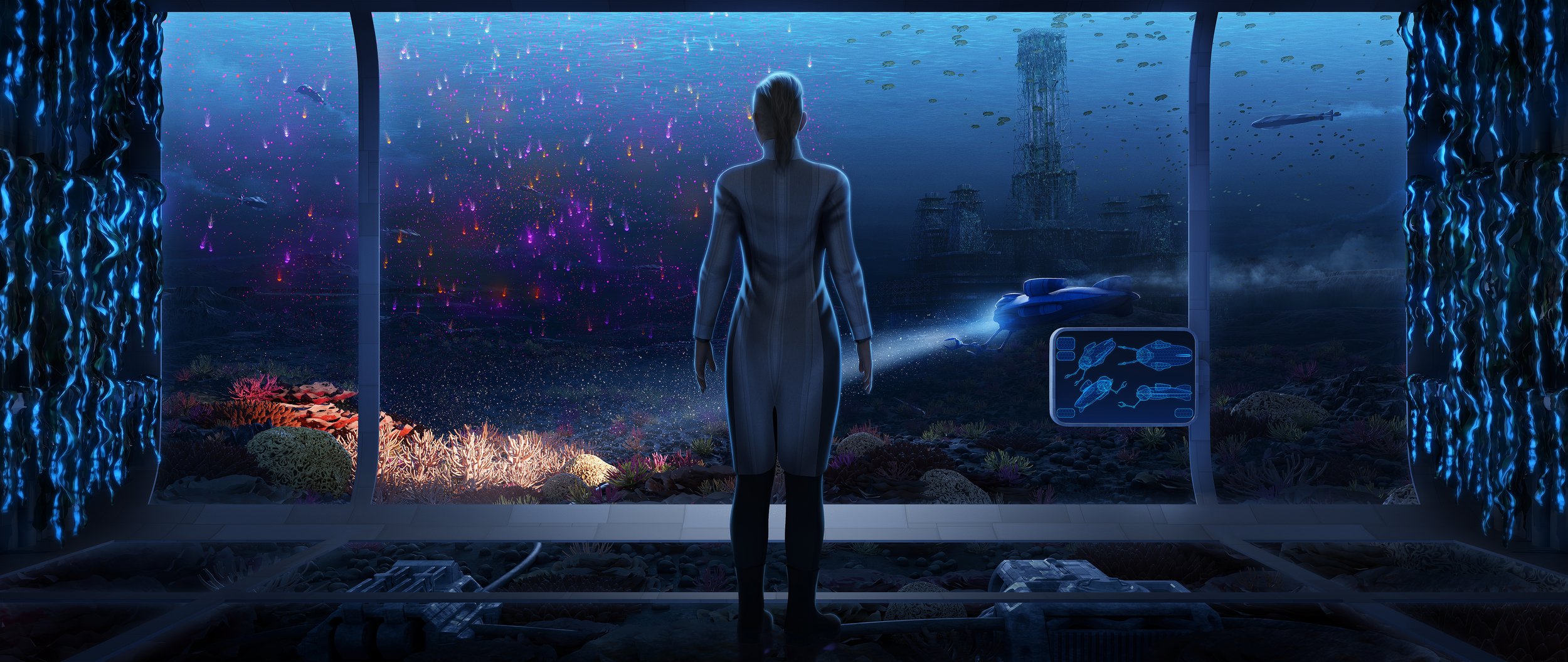Futures-thinking
Imagining pathways towards desirable futures

Being able to have structured thoughts about the future is an important skill that is underdeveloped in many modern societies. Photo: Kirillm via Canva.
Every day, people plan for the future, but having structured thoughts about what futures could look like is a skill we should all practice in the face of the Anthropocene, according to recent research
- To tackle the Anthropocene, we need transformative change
- Large societal transformations are only possible if humanity gets better at imagining and envisioning positive futures
- Seven decades of futures-thinking provide useful lessons and approaches
Everyone wants a better future, but what do those futures look like?
A recent paper published in the journal Annual Review of Environment and Resources has some answers. The article, to which Centre researchers Jan Kuiper, Laura Pereira, and Garry Peterson have contributed, summarizes key developments in the field of futures-thinking.
If we can’t imagine how we want to live in the Anthropocene, it is very difficult to stake out pathways to get to preferable futures.
Centre researcher Jan Kuiper
Futures-thinking is exactly what it sounds like: a discipline of systematically looking at possible (or even impossible) futures. That can go under many different forms and names, from specific scenarios to strategic foresight and more value-based imagination of what futures might look like.
An introduction to futures-thinking
For everybody interested in learning more about futures-thinking, the paper presents an introduction to futures-thinking. As the authors write:
“Our objectives are to help newcomers to futures-thinking make sense of what has been happening in scholarship and practice and to encourage existing participants to reflect on past and recent developments.”
According to the scientists behind the paper, being able to have structured thoughts about the future is an important skill that is underdeveloped in many modern societies. It’s also a skill that might prove vital as humanity will need to undergo fundamental transformations in the face of the Anthropocene.
“If we can’t imagine how we want to live in the Anthropocene, it is very difficult to stake out pathways to get to preferable futures,” explains Centre researcher Jan Kuiper, one of the co-authors.
 Zoom image
Zoom imageThe concept of a 'future cone' is a way to visualize the idea that as we look further ahead, there are more possible futures that could happen. Yet, often, the futures that are officially planned for only represent a small slice of what's possible.
Possible pathways
Transformative change requires that people get a better grasp on their current situation and strengthen their ability to imagine pathways toward brighter futures, according to the authors. In the article, they list four possible pathways:
Seeds of better futures
Preferable futures might grow out of small ideas and changes that exist already today. Several initiatives have started to collect such seeds of change, including the project Seeds of Good Anthropocenes.
Preferable futures
Research has shown that large groups of people can, to a large extent, agree on what kind of futures are desirable – and what aren’t. It’s possible to build on those shared aspects of preferable futures, while at the same time staying open to diversity.
Intervention points
Change can come from unexpected places. Systematically thinking about the future can help identify opportunities and unusual partnerships that can help transformations can happen more quickly.
Coupling Futures-thinking with decision-making
Institutions and policymaking often expect the continuation of the recent past, however it is possible to link more robust futures-thinking and decision-making better, for example by coupling it with strategic planning and risk mitigation processes.
The authors conclude:
“Approaches to futures-thinking have helped people from diverse backgrounds reach a common understanding of important issues, underlying causes, and pathways toward optimistic futures.”
Cork, S., Alexandra, C., Alvarez-Romero, J.G., Bennet, E.M., Berbés-Blásquez, M., Bohensky, E., Bok, B., Constanza, R., Hashimoto, S., Hill, R., Inayatullah, S., Kok, K., Kuiper, J.J., Moglia, M., Pereira, L., Peterson, G., Weeks, R. & Wyborn, C. 2023. Exploring Alternative Futures in the Anthropocene. Annual Review of Environment and Resources, 48, 25-54.








